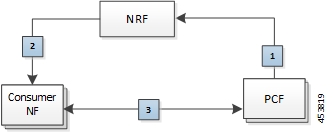Feature Summary and Revision History
Summary Data
|
Applicable Product(s) or Functional Area |
PCF |
|
Applicable Platform(s) |
SMI |
|
Feature Default Setting |
Enabled – Configuration required to disable |
|
Related Documentation |
Not Applicable |
Revision History
|
Revision Details |
Release |
|---|---|
|
Added a |
2023.04.0 |
|
Enhancement introduced. PCF is configured to send the cluster load information in the heartbeat. |
2020.05.0 |
|
First introduced. |
2020.02.0 |

 Feedback
Feedback